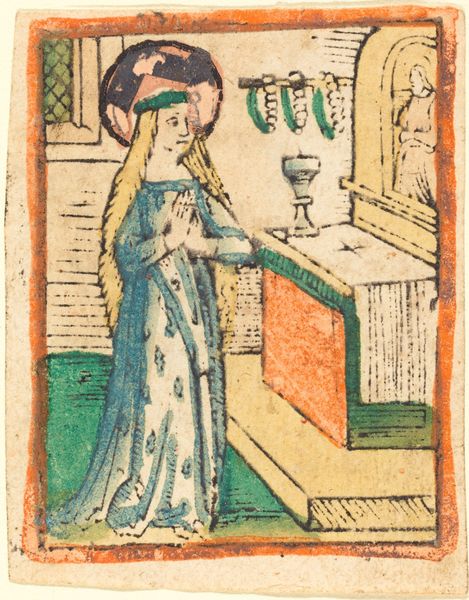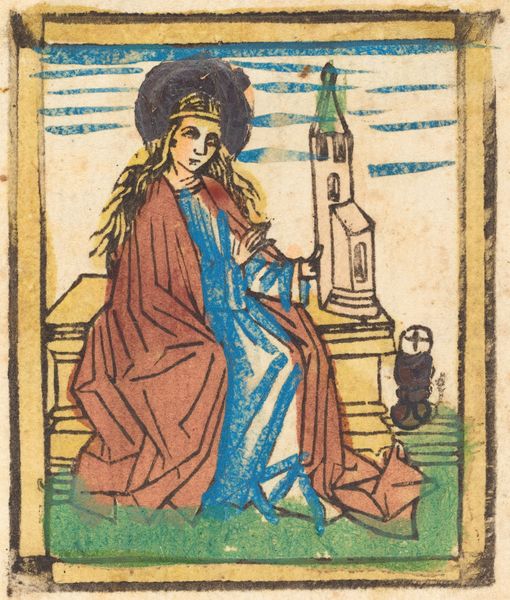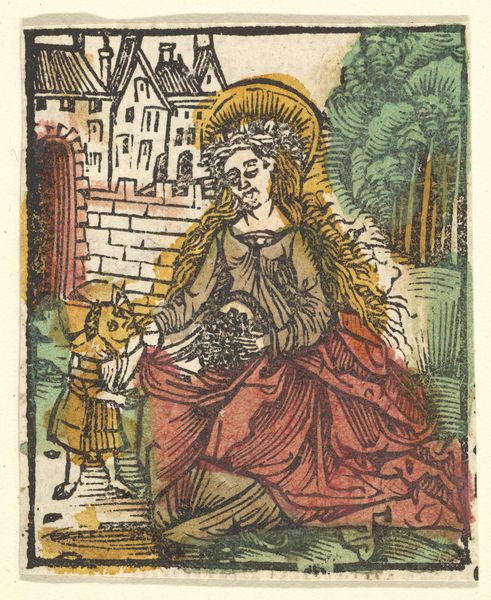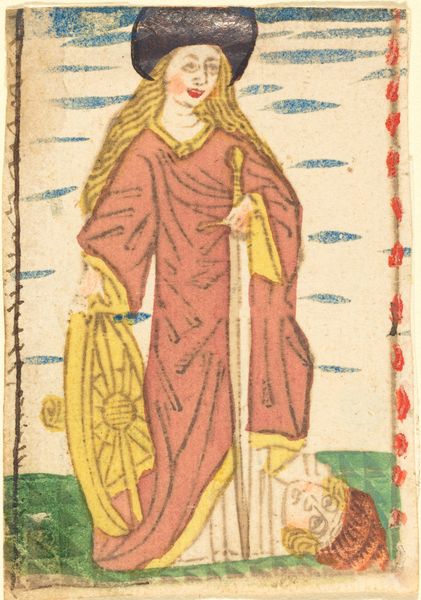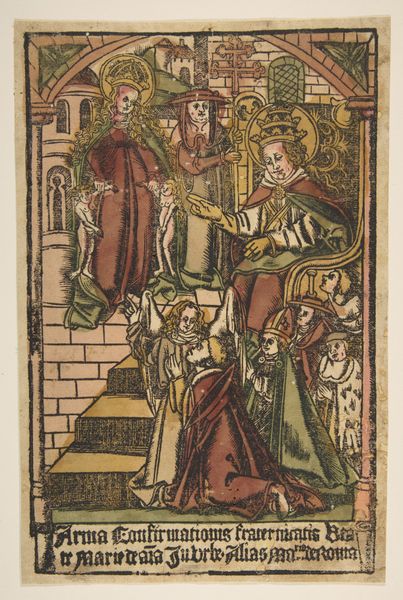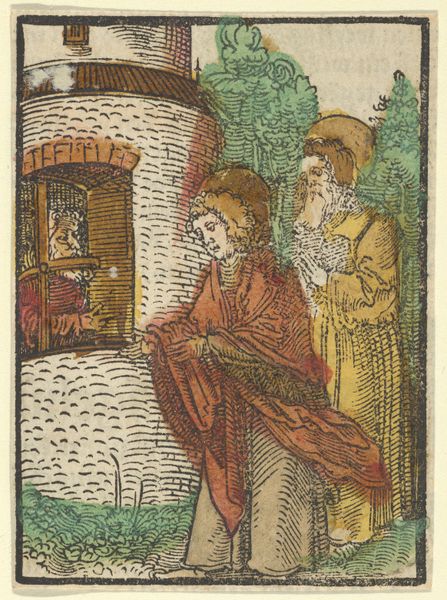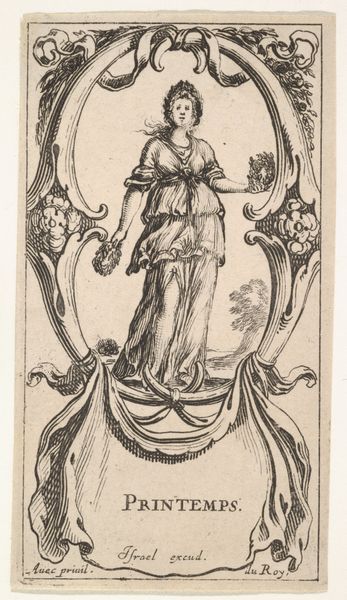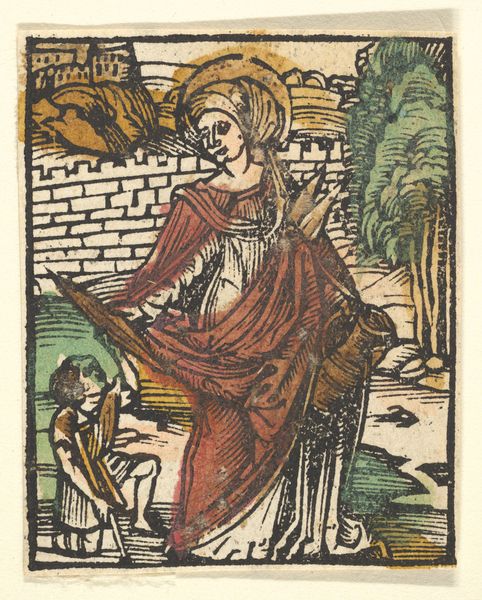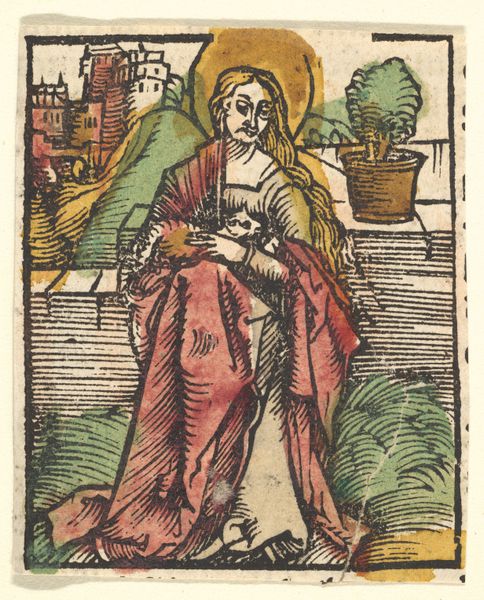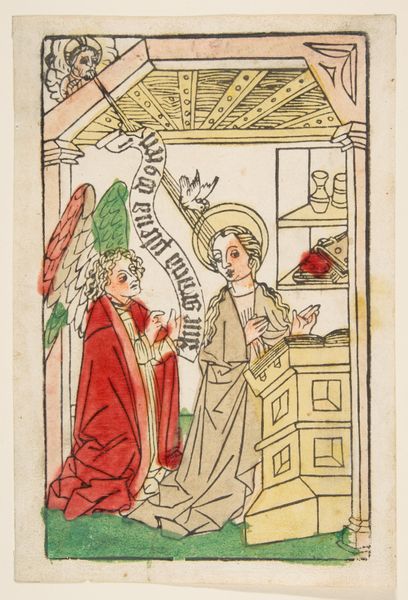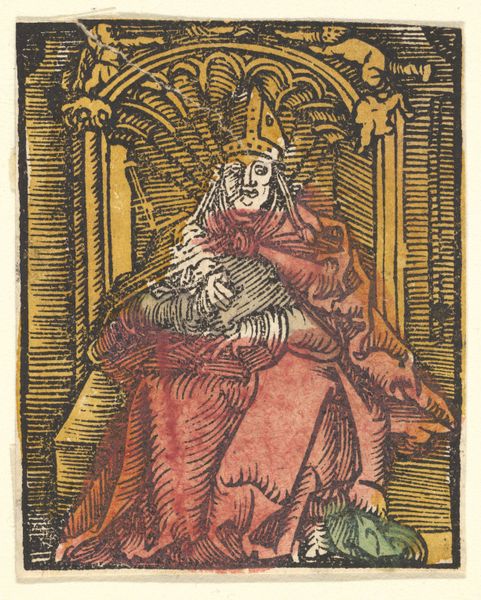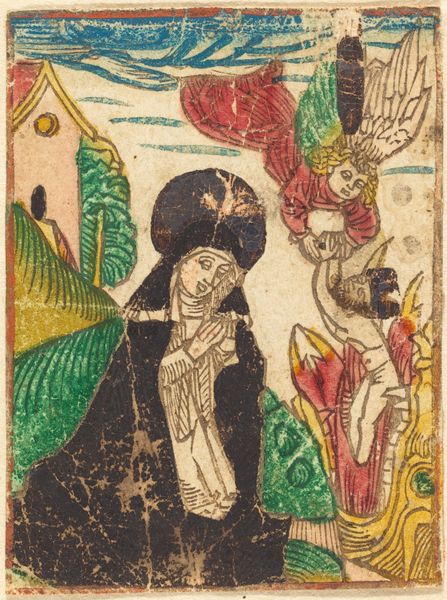
print, woodcut
#
medieval
# print
#
figuration
#
woodcut
#
history-painting
#
northern-renaissance
Dimensions: sheet: 8.8 x 6.6 cm (3 7/16 x 2 5/8 in.)
Copyright: National Gallery of Art: CC0 1.0
Editor: This woodcut print, "The Virgin in a Robe Embroidered with Ears of Corn," was created by an anonymous artist around 1470-1480. I find it so interesting, the virgin’s robe is literally covered in ears of corn, which strikes me as rather unusual and quite striking! What can you tell us about this piece, and perhaps shed light on this interesting detail? Curator: The ears of corn are incredibly significant, you're right. Consider the power structures of the late medieval period. What do you see, symbolically, when you look at the Madonna in this context? The corn isn't just decoration. It's deeply intertwined with sustenance, life, and by extension, power and status. This robe can be read as an allegory on female strength and ability. Editor: That makes a lot of sense! So the Virgin Mary isn’t only portrayed in a position of grace, but in one that hints to authority as well. I suppose the ears of corn refer to land, thus possession. What’s the significance of woodcut as a printing medium? Curator: Precisely. Woodcut as a medium facilitated wider access to imagery. Its relative simplicity and lower cost meant these images could circulate amongst a broader audience, enabling this allegorical representation of feminine empowerment to reach and possibly empower individuals who didn’t belong to the high elite class. Also observe the architecture on the piece: this arched interior acts as a symbol that encompasses divinity, amplifying the notion of the Virgin’s power. What does that make you think? Editor: It all connects so well. Thank you, I didn't notice all these implications, I can definitely say that my view on the piece has grown enormously! Curator: And I believe your questioning encourages a more thorough and intersectional engagement with art. The connections are never obvious; our role as observers is to search for meaning to construct knowledge!
Comments
No comments
Be the first to comment and join the conversation on the ultimate creative platform.
